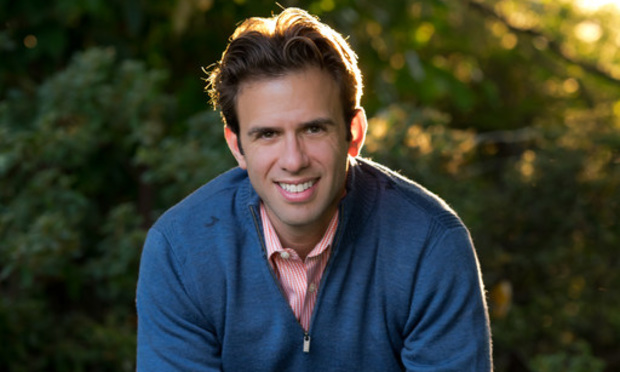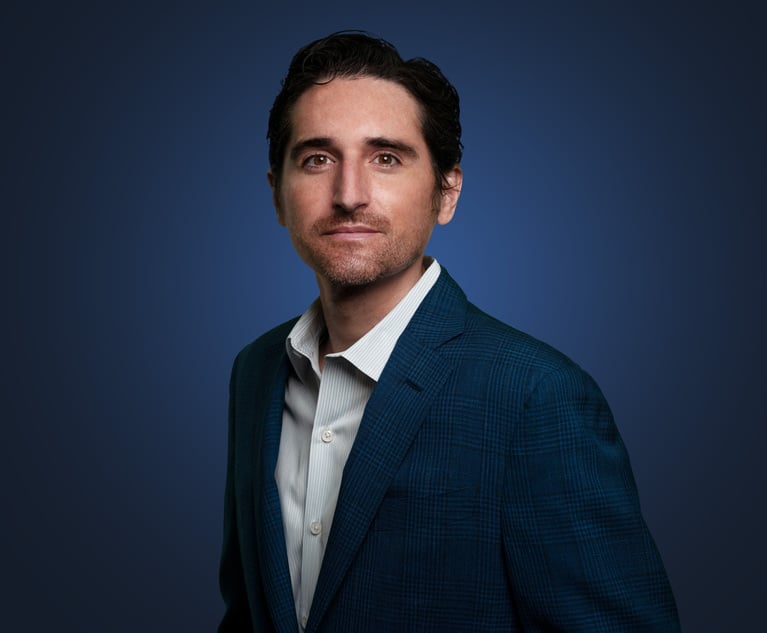Be Sure to Play 'Show and Tell' With Your Law Firm's Online Newsroom
Online newsrooms are powerful and versatile marketing tools for law firms. They are powerful because lawyers can use their firms' newsrooms to build their authority and credibility with website visitors simply by talking about themselves and the work they've done for their clients.
May 03, 2018 at 01:05 PM
10 minute read

Online newsrooms are powerful and versatile marketing tools for law firms. They are powerful because lawyers can use their firms' newsrooms to build their authority and credibility with website visitors simply by talking about themselves and the work they've done for their clients. Newsrooms are versatile because with a single piece of information, lawyers and their firms can talk to audiences as varied as clients, referral sources, members of the media, and current and prospective partners, associates, and staff members. An online newsroom is often the first place a website visitor will go when he wants to know what has been going on recently at a law firm. For these reasons, newsrooms are probably the second-most important section of a law firm's website behind attorney biographies.
I have noticed a recurring theme with many law firms' online newsrooms, even when controlling for size, location and practice areas: they do more “telling” than they do “showing.” When they actually talk about the work they do for their clients, firms often focus on a legal result (a favorable settlement or a defense verdict) instead of explaining how the client benefited from a particular legal result. Likewise, when it comes to what their lawyers and staff members do outside of pure legal work, law firms often focus on speaking engagements and published articles instead of shining a spotlight on the human side of their employees and lawyers.
Yes, there is value to the “telling” that a law firm may do in its online newsroom. Whenever possible, firms should absolutely tell website visitors as much as they can about the work the firms do for their clients. However, in many instances, “showing” can be more effective in making an impact on website visitors and convincing them that the law firm or one of its lawyers is the answer for whatever question brought the visitor to that firm's website in that particular moment.
Here are four suggestions for balancing the show and tell of a law firm's online newsroom.
- Lawyers and law firms should tell visitors about the work they do for their clients.
Lawyers and their firms should be telling visitors about the substantive work they do for their clients. Substantive work is naturally going to mean different things to different lawyers and firms based on those lawyers' and firms' practices. But regardless of what area of law a lawyer practices in, there are opportunities for lawyers to use their client work as material for their online newsrooms. For example, developments in litigation—from the filing of a complaint through the settlement of a lawsuit—provide ample material. So does a family law lawyer's efforts to help clients with an adoption. So too does an immigration lawyer's efforts to help a client obtain U.S. citizenship or fight back against deportation. While it is tempting to only trumpet “wins,” a law firm might practice in an area where even nondispositive developments—such as the mere filing of a document with a court or an administrative agency—could provide material for the firm's newsroom.
It will not surprise any readers of this column to learn that depending on how detailed a lawyer wishes to be concerning his or her description of work for his or her clients, there will be some ethical considerations to work through. A threshold question lawyers and law firms must ask is “How detailed should I be in our description of our client work based on our clients' wishes, the nature of the matter, and ethical considerations?”
While I am not going to provide an in-depth analysis of the ethics of lawyers speaking publicly about their clients' cases, there are some basic ethical considerations lawyers should keep in mind when doing so. As the American Bar Association concluded in a recent ethics opinion (Formal Opinion 480, March 6, 2018), a lawyer may run afoul of ABA Model Rule of Professional Conduct 1.6 (confidentiality of information) when the lawyer speaks publicly about a client's matter—including information about that client that is generally known or contained in a public record—if the lawyer has not secured informed consent from a client to speak publicly about that client's matter. In other words: lawyers should receive informed consent from clients before telling the world about the work they do for them. (Of course, lawyers must be sure not to disclose privileged information about their clients and their matters). Lawyers should also be cognizant of their ethical duties under Rules of Professional Conduct 3.6 (trial publicity) and 7.1 (communication concerning a lawyer's services), as well as any applicable ethics opinions from the jurisdictions where they are licensed. And, in some cases, there may be a need for a “past performance is no guarantee of future results”-type disclaimer that applies to descriptions of legal results.
Not to be outdone, there may be some occasions where in their efforts to publicly discuss their filing of a complaint in litigation, lawyers may not be able to enjoy the protection of the litigation privilege to defamation as to those public statements, see Bochetto v. Gibson, 860 A. 2d 67 (Pa. 2004). For some lawyers, this might be a reason to not publicize their filing of a lawsuit. Those lawyers might find comfort in the liberal use of “allegedly” when describing a recently filed lawsuit. They may find additional comfort in drafting newsroom material that anonymizes adversaries and speaks generally about the factual and legal claims alleged in a complaint.
- But lawyers and law firms should show those visitors how they have helped their clients solve problems.
It is one thing for lawyers to tell website visitors about the work they do for their clients. It is another thing for lawyers to show visitors how the lawyers' work makes life better for clients. For clients, a lawyer's services are often a means to a nonlegal end. Lawyers should be taking their work out of the legal context and showing what the legal result meant for a client. For example, it is great that a special education lawyer favorably resolved a client's case against the local school district involving the client's autistic child. But the lawyer should explain how the client's child will benefit or has benefited from the educational services the client received in the settlement. A corporate lawyer could explain how a recent deal ensured that a family-owned business stays that way for the foreseeable future. A zoning and land use attorney could explain how she helped resolve a bottleneck that allowed a client to build an affordable housing project that benefited the community. And so on.
When lawyers and their clients decide to use the clients' actual names and disclose specific details of their matters, lawyers should consider using video to capture those clients explaining in their own words how their lawyers helped solve their problems. With as little equipment as his or her smartphone's camera, a lawyer can capture a few minutes' worth of captivating (and high-quality) video for posting on YouTube or the lawyer's website. Imagine how persuasive these videos could be to website visitors looking to determine how a lawyer could help them with their legal problems.
- Lawyers and law firms should tell visitors about their “thought leadership” activities
Lawyers should use their law firms' newsrooms to publicize any and all activities that position the lawyers as “thought leaders” in their fields. Details about these activities are easy ways for lawyers to build their authority and credibility with visitors. Prospective clients and referral sources are likely to perceive a lawyer as knowledgeable—and perhaps reach out to the lawyer about his or her services—if they see a track record of speaking engagements and publications. Same thing goes for reporters looking for sources for stories they are working on.
Was a lawyer quoted in an article or blog post about a legal issue or dispute (regardless of whether the lawyer was involved in the dispute)? There should be a blurb in the newsroom and a link to the article/post. Did a lawyer speak at a conference or give a CLE? There should be a blurb in the newsroom with a link to the event's web page if possible. Did a lawyer author a section of a treatise or another resource? There should be a blurb in the newsroom with a link to where a visitor can learn more about the treatise or resource.
- But lawyers and law firms should show those visitors that the lawyers are human.
The goal of connecting with website visitors is to get them to know, like, and trust the firm and its lawyers. The above three suggestions tend to address the “know” and the “trust.” The “like” is going to be helped by these visitors connecting with a firm's lawyers and staff on a personal level. Thus, lawyers and their firms should capitalize on opportunities to show these audiences that the lawyers have a human side. For lawyers not used to giving strangers a look at the lawyers' personal lives, this might seem uncomfortable. But I am not suggesting that lawyers post their family photos in their law firms' newsrooms. Instead, lawyers should think about what they do outside of the office and then decide how to publicize their achievements in those activities. This could mean a law firm posting information about its lawyers' board positions or volunteer work. It could mean a blurb about a lawyer or staff member exhibiting his or her artwork at an art gallery. Maybe a lawyer or staff member won an award for his or her secret chili recipe at a competition. Maybe a lawyer or staff member won a 5K or marathon. With a few minutes of self-reflection, I have no doubt lawyers of all types and their colleagues can find achievements outside of the office that they feel comfortable sharing with a professional audience.
Law firm online newsrooms are valuable real estate on which firms can publicize their accomplishments to a variety of audiences. Law firms should not hesitate to tell these audiences both about the good work they do for their clients and instances where the firms' lawyers have demonstrated knowledge in particular areas of the law. But too much “telling” without enough “showing” may create a wall between law firms and website visitors which prevents those visitors from fully absorbing the value of the work the firm does for its clients. Because of this, law firms should be sure to do a fair amount of “showing” in their online newsrooms. This “showing” will allow law firms and their lawyers to better connect with website visitors. These connections could lead to more clients, more referrals, and more interest from the media in the work done by the firms and their lawyers. Not only are more clients, referrals, and media interest good things on their own, they are likely to lead to—wait for it—even more online newsroom content down the road.
Wayne Pollock is the founder and managing attorney of Copo Strategies in Philadelphia, a national legal services and communications firm helping attorneys and their clients manage media interest and public interest in those clients' legal disputes. He is also a director at Baretz+Brunelle, a national communications firm. Contact him at 215-454-2180, or @waynepollock_cs on Twitter.
This content has been archived. It is available through our partners, LexisNexis® and Bloomberg Law.
To view this content, please continue to their sites.
Not a Lexis Subscriber?
Subscribe Now
Not a Bloomberg Law Subscriber?
Subscribe Now
NOT FOR REPRINT
© 2025 ALM Global, LLC, All Rights Reserved. Request academic re-use from www.copyright.com. All other uses, submit a request to [email protected]. For more information visit Asset & Logo Licensing.
You Might Like
View All
Plaintiff Argues Jury's $22M Punitive Damages Finding Undermines J&J's Talc Trial Win
4 minute read
Pa. High Court: Concrete Proof Not Needed to Weigh Grounds for Preliminary Injunction Order
4 minute read
Superior Court Directs Western Pa. Judge to Recuse From Case Over Business Ties to Defendant
3 minute read
Seven Rules of the Road for Managing Referrals To/From Other Attorneys, Part 2
6 minute readTrending Stories
Who Got The Work
J. Brugh Lower of Gibbons has entered an appearance for industrial equipment supplier Devco Corporation in a pending trademark infringement lawsuit. The suit, accusing the defendant of selling knock-off Graco products, was filed Dec. 18 in New Jersey District Court by Rivkin Radler on behalf of Graco Inc. and Graco Minnesota. The case, assigned to U.S. District Judge Zahid N. Quraishi, is 3:24-cv-11294, Graco Inc. et al v. Devco Corporation.
Who Got The Work
Rebecca Maller-Stein and Kent A. Yalowitz of Arnold & Porter Kaye Scholer have entered their appearances for Hanaco Venture Capital and its executives, Lior Prosor and David Frankel, in a pending securities lawsuit. The action, filed on Dec. 24 in New York Southern District Court by Zell, Aron & Co. on behalf of Goldeneye Advisors, accuses the defendants of negligently and fraudulently managing the plaintiff's $1 million investment. The case, assigned to U.S. District Judge Vernon S. Broderick, is 1:24-cv-09918, Goldeneye Advisors, LLC v. Hanaco Venture Capital, Ltd. et al.
Who Got The Work
Attorneys from A&O Shearman has stepped in as defense counsel for Toronto-Dominion Bank and other defendants in a pending securities class action. The suit, filed Dec. 11 in New York Southern District Court by Bleichmar Fonti & Auld, accuses the defendants of concealing the bank's 'pervasive' deficiencies in regards to its compliance with the Bank Secrecy Act and the quality of its anti-money laundering controls. The case, assigned to U.S. District Judge Arun Subramanian, is 1:24-cv-09445, Gonzalez v. The Toronto-Dominion Bank et al.
Who Got The Work
Crown Castle International, a Pennsylvania company providing shared communications infrastructure, has turned to Luke D. Wolf of Gordon Rees Scully Mansukhani to fend off a pending breach-of-contract lawsuit. The court action, filed Nov. 25 in Michigan Eastern District Court by Hooper Hathaway PC on behalf of The Town Residences LLC, accuses Crown Castle of failing to transfer approximately $30,000 in utility payments from T-Mobile in breach of a roof-top lease and assignment agreement. The case, assigned to U.S. District Judge Susan K. Declercq, is 2:24-cv-13131, The Town Residences LLC v. T-Mobile US, Inc. et al.
Who Got The Work
Wilfred P. Coronato and Daniel M. Schwartz of McCarter & English have stepped in as defense counsel to Electrolux Home Products Inc. in a pending product liability lawsuit. The court action, filed Nov. 26 in New York Eastern District Court by Poulos Lopiccolo PC and Nagel Rice LLP on behalf of David Stern, alleges that the defendant's refrigerators’ drawers and shelving repeatedly break and fall apart within months after purchase. The case, assigned to U.S. District Judge Joan M. Azrack, is 2:24-cv-08204, Stern v. Electrolux Home Products, Inc.
Featured Firms
Law Offices of Gary Martin Hays & Associates, P.C.
(470) 294-1674
Law Offices of Mark E. Salomone
(857) 444-6468
Smith & Hassler
(713) 739-1250





